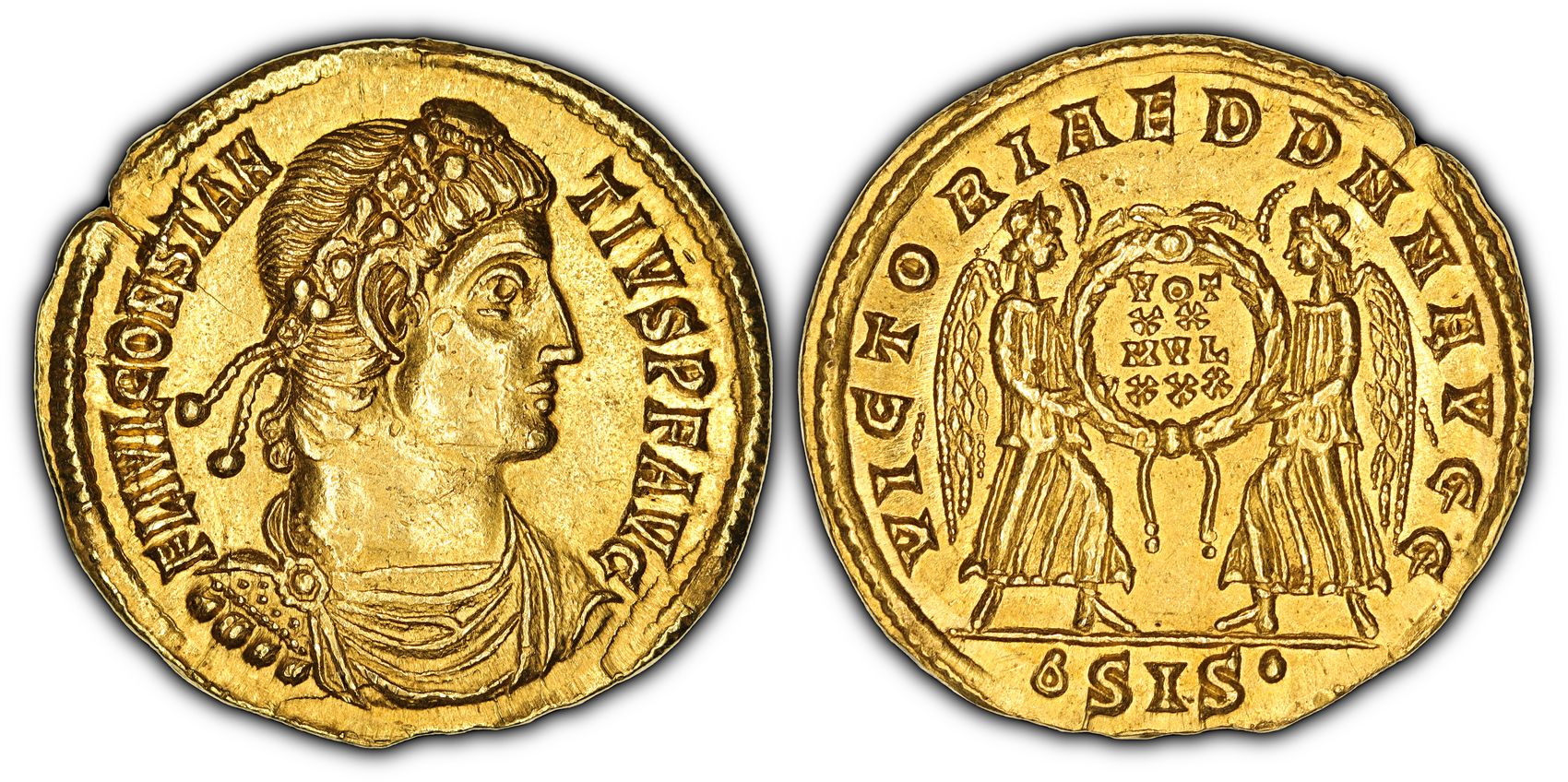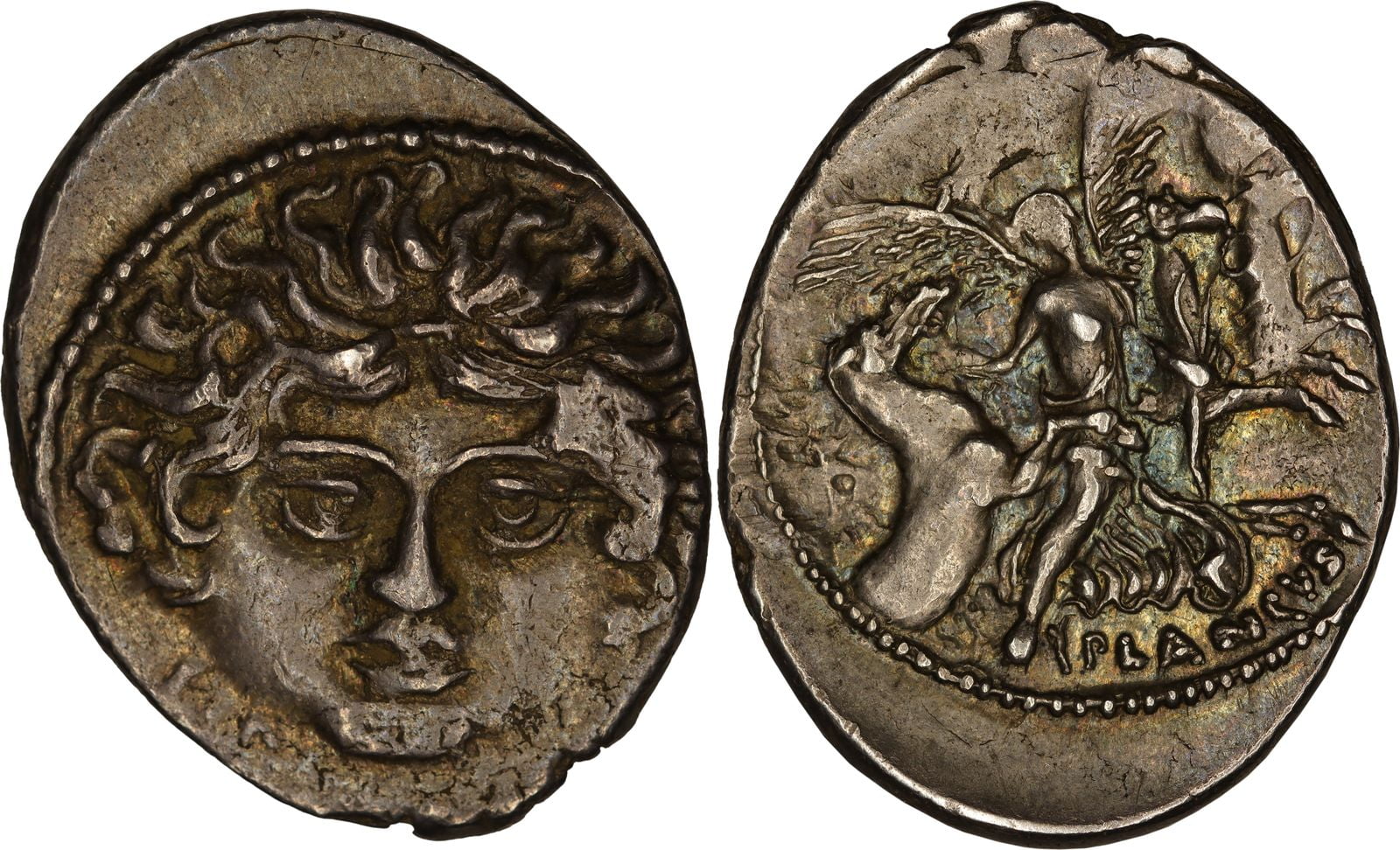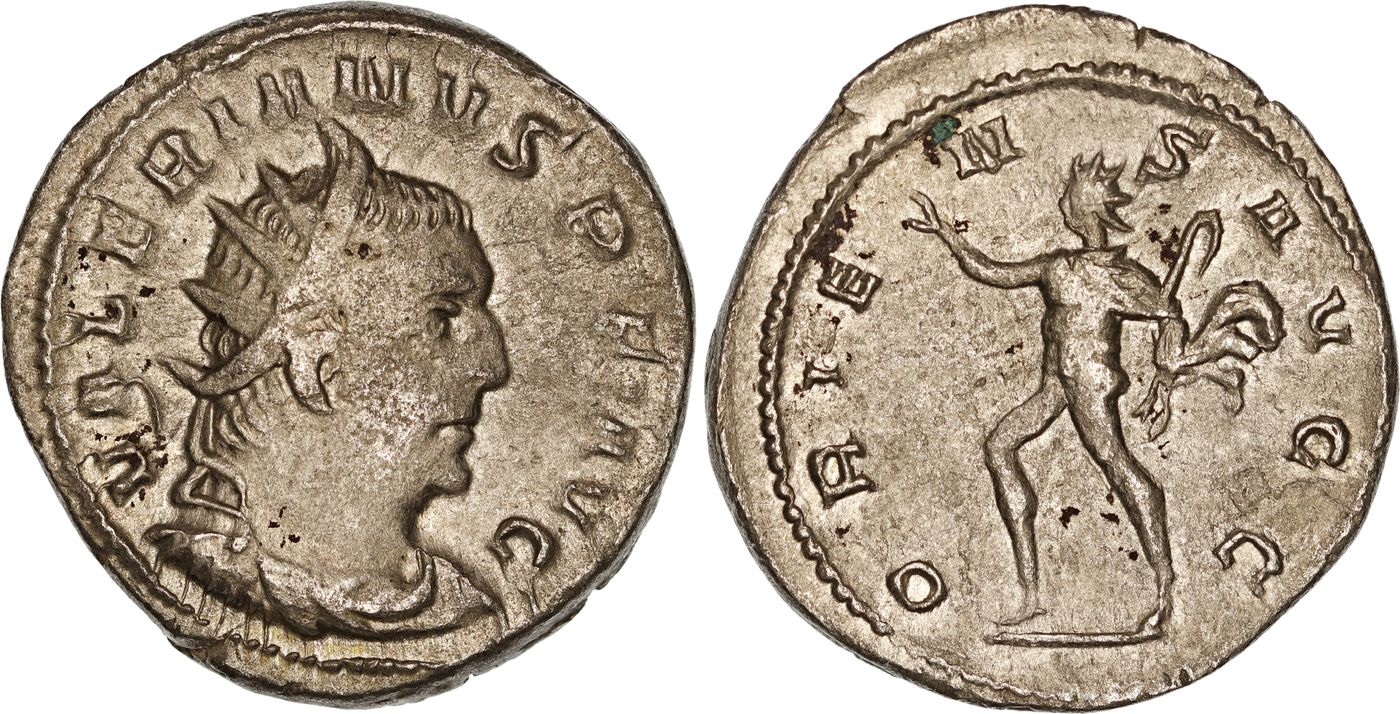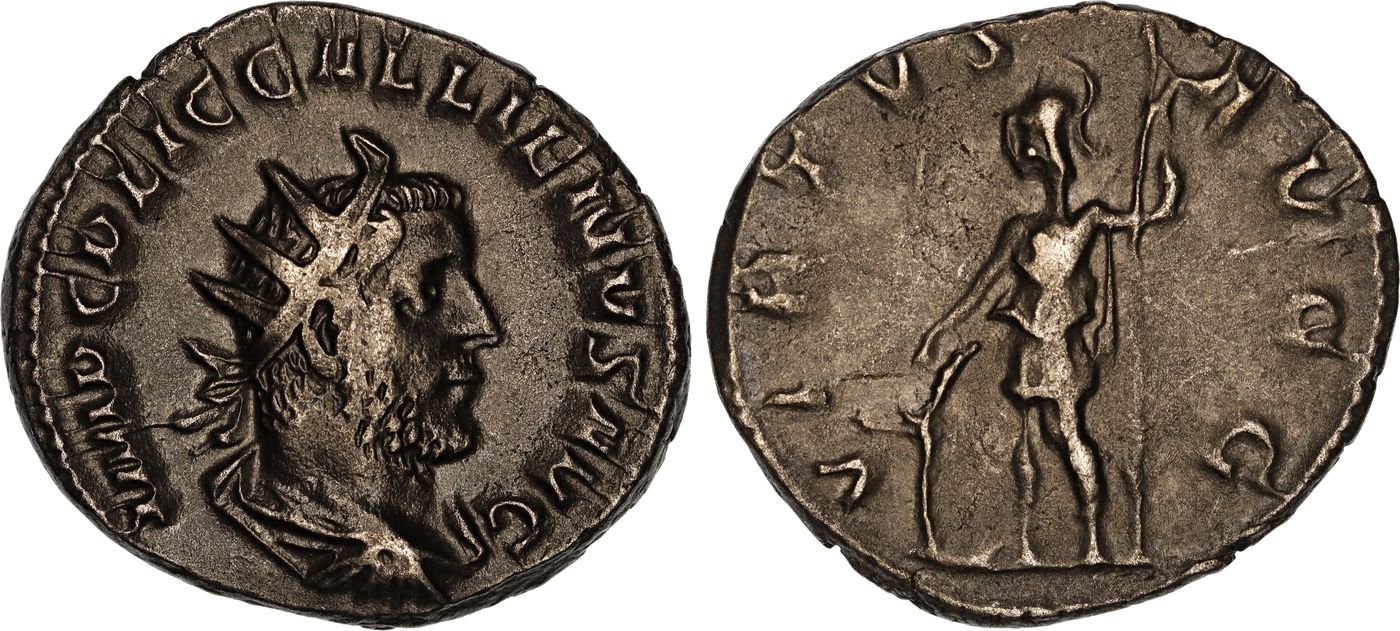‘Bacchius the Jew’ Commemorative Denarius of Aulus Plautius
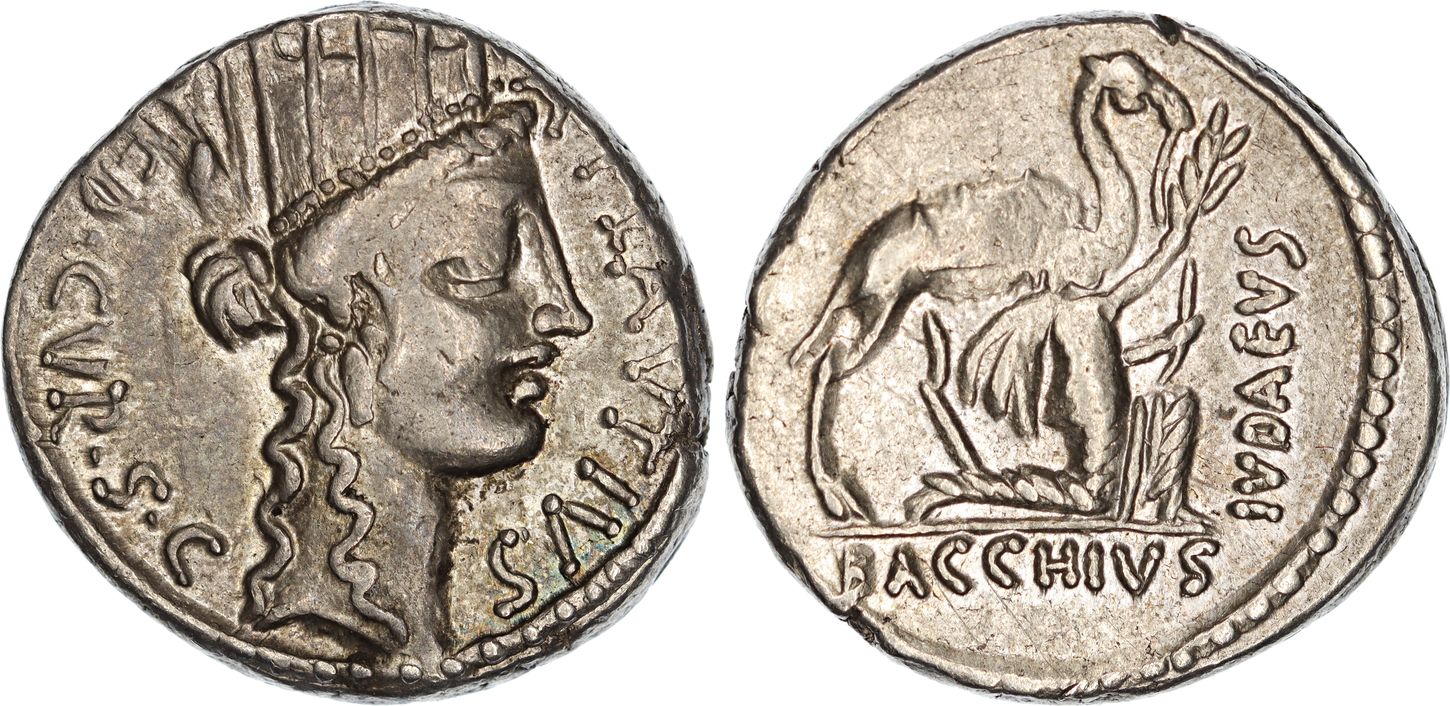
Aulus Plautius was a member of gens Plautīa, specifically the family branch of gens Plautī Silvānī, and was a prominent statesman towards the end of the Roman Republic, holding several magistracies over his career: tribūnus plēbis (Tribune of the Plebs) in 56 BC, aedīlis curūlis in 55 BC, praetor urbānīs in 51 BC, prōpraetor of Prōvincia Bīthȳnia et Pontus, and later as prōpraetor of Prōvincia Cyprus with proconsular command. He was a friend of the statesman Mārcus Tullius Cicerō (Cicero) and a supporter of Gnaeus Pompeius Magnus (Pompey the Great), and was the father and grandfather of two honoymous men: his son, Aulus Plautius, a Senator who served as suffect consul of 1 BC, and, more noteably, his grandson, Aulus Plautius, Suffect Consul of 29 AD and governor of Prōvincia Pannonia, and later the Emperor Claudius’ appointed General in command of the Roman Invasion of Britannia. At the head of several legions, including legiō II Augusta which was commanded by the future Emperor Titus Flāvius Vespasiānus (Vespasian), the grandson Aulus Plautius conquered much of the southern portion of England and subsequently served as its first governor from 43 to 47 AD – following his retirement, he returned to Rome to an ovation, during which emperor Claudius himself walked by his side to and from the Capitol, demonstrating his high favour with the Julio-Claudian Emperor.

Reverse: Bacchius Judaeus (Aristobulus II, High Priest and King of Judaea) kneels right in submission by camel, holding the camel’s reins in his left hand and offering branch with right, “BACCHIVS” in exergue, “IVDAEVS” upward to right.
The rather interesting ‘Bacchius the Jew’ commemorative denarius of Aulus Plautius was struck during his time as aedīlis curūlis in 55 BC. There has been plenty of research into this numismatic type, foremost as to the identification of ‘Bacchius’ on the reverse. M. Harlan suggests the figure to be Aristobulus II of the Hasmonean dynasty who became King and High Priest of Judaea in 67 BC after overthrowing his elder brother, King Hyrcanus II, in a rebellion only three months into the latter’s reign. Although the Judaean civil war ended on peaceful terms and the former king unharmed and confined to Jerusalem, Hyrcanus II eventually fled the city, possibly out of fear for his life, to the refuge of the neighbouring Nabatean Kingdom. Now under the protection of King Aretas III, Hyrcanus II negotiated a deal with the Nabateans, who in-turn amassed an army of 50,000 and marched on Jerusalem, sieging the city for several months.
Concurrently to these events, the Roman Republic was conquering Anatolia to the north – under the command of the general Pompey the Great, the Roman legions defeated Tigranes II of Armenia in 66 BC, completely defeated Mithridates VI of Pontus in 65 BC (who later died in 63 BC), and deposed and executed the client-king Antiochus XIII of the Seleucid Kingdom in 64 BC. As a result, much of the lands were annexed as Prōvinciae, namely Prōvincia Pontus, Prōvincia Cilicia and Prōvincia Syria.
As allies of the Roman Republic, Judaean King Aristobulus II sought the help of the Roman forces to the north; hearing of his brother’s plans, both Hasmoneans now requested the Pompeian commander, Mārcus Aemilius Scaurus, for military intervention. Making the decision based on financial gain, Scaurus decided in favour of the larger gift of 400 talents of silver by Aristobulus II, ordering the Nabateans to withdraw. Ultimately, this decision became inconsequential however, as Pompey the Great marched south, arriving in Judaea soon after and deciding that Hyrcanus II, the older and weaker of the two brothers, would be a more reliable ally that Rome could control. The Jewish armies of King Aristobulus II were defeated decisively and the king eventually captured in 63 BC, and although Jerusalem was promised with his surrender, the Judaean forced inside the city refused to open the gates, resulting in a siege and capture by force, badly damaging much of the city’s architecture. Pompey the Great withdrew north for other matters in 63 BC, leaving Mārcus Aemilius Scaurus as proquaestor of the newly formed Prōvincia Syria.
Although King Aristobulus II’s surrender occurred eight years prior, it is highly likely that these events are the first of two commemorative aspects of this denarius, especially since Aulus Plautius was a supporter of Pompey the Great.

Obverse: Turreted head of Cybele (Magna māter) facing to the right, mint magistrate’s name “A PLAVTIVS” downward to right, “AED· CVR· S·C” downward to left.
The second commemorative aspect of this denarius is revealed when investigating the obverse. Foremost, the legend notes his name, “A PLAVTIVS” as well as his magistracy of aedīlis curūlis – this was a Republican elected office in charge of infrastructure and the organization of events. Also, and of note, the obverse is inscribed with “S·C”, abridged for “senātus consultum”, demonstrating this monetary piece had the decree of the Senate and was authentic, despite Aulus Plautius serving as aedīlis curūlis rather than a triumvir monētālis or a trēsviri aere argentō aurō flandō feriundo, one of the “three men for casting (and) striking bronze, silver (and) gold (coins)”. The central obverse figure is the turreted head of Cybele, known to the Romans as ‘Magna māter’, the great mother, and is a direct reference and commemoration of the Megalesia of 55 BC. This event was a grand festival of Ancient Rome celebrated between April 4th and April 10th in honour of Magna māter, and as this was a public event, Aulus Plautius as an aedīlis curūlis would have been responsible for its organization.

